Nature's bounty can come in giant waves throughout the year. If you're a wild mushroom hunter, you'll quickly realize you need a plan to figure out what you're going to do with all of your free food. One of the easiest ways of preserving mushrooms is drying or dehydrating them.
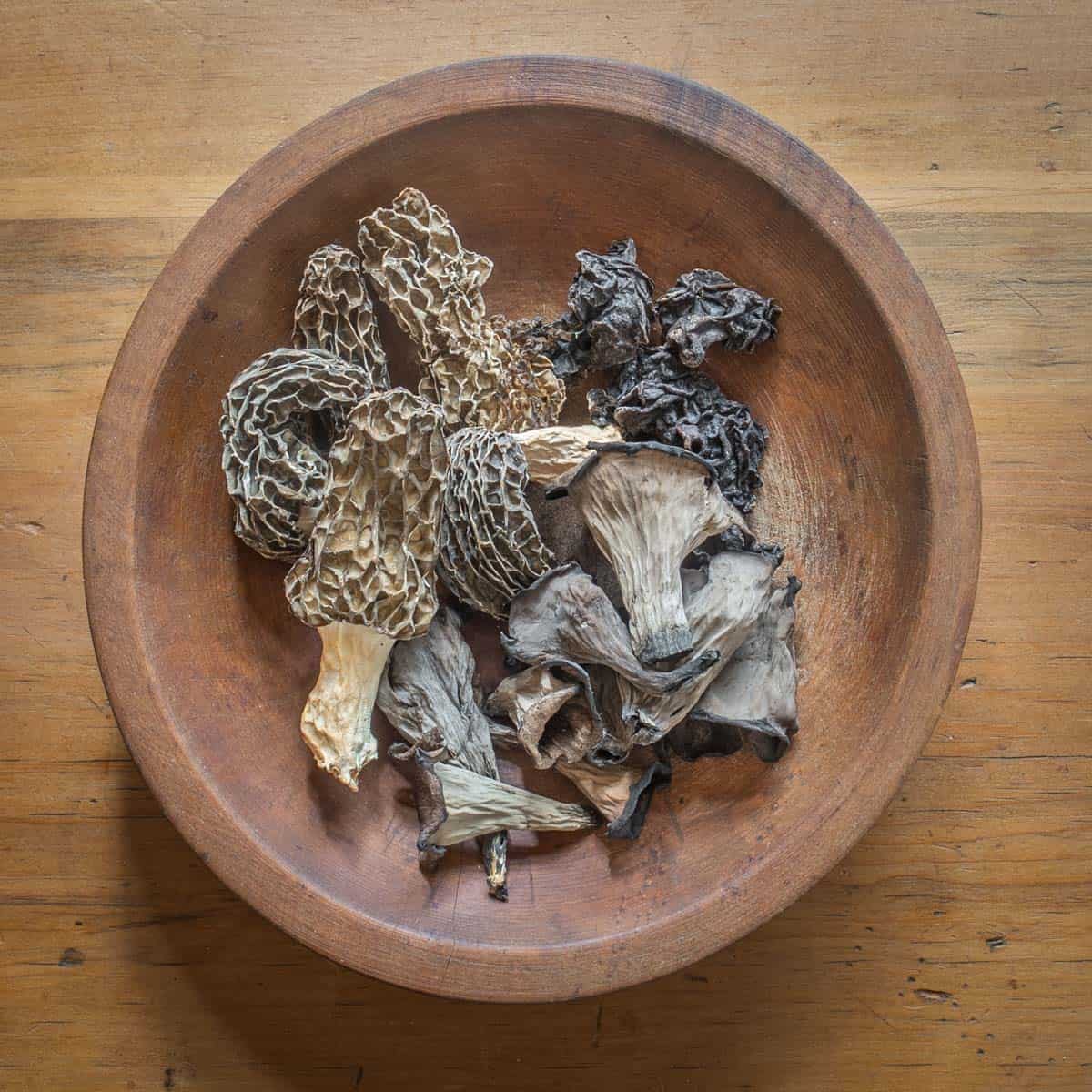
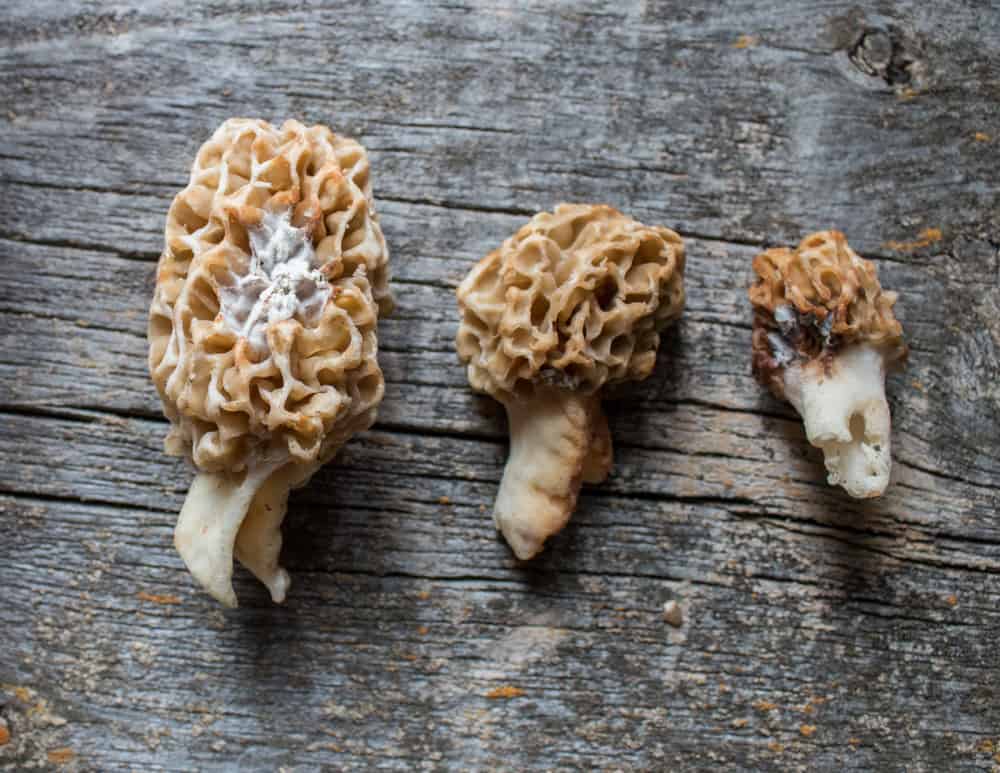
I've tried to dry and preserve almost every mushroom I've come across, and I was the point man for drying and preserving the hundreds of pounds of wild mushrooms that came through the door for a professional restaurant years ago.
Drying mushrooms at home isn't as serious as it is in a restaurant, where I've seen 30, 40 or even 100 lbs dealt with at a single time, but a few little tips and tricks can save you from possible heartbreak in the event you were out on a very hot or wet day when picking. Properly dried, your mushrooms will last, literally, for years to come with minimal loss of flavor. Here are some things I find helpful, and some Q and A style tips I've gotten from readers.
My Tips on Drying Wild Mushrooms
Clean and separate your mushrooms
You don't *have to* clean them, but it's a good idea to brush the mushrooms and at least attempt to clean them a bit well before drying, especially if you're going to powder them for using as a seasoning, or for crusting meat, etc.
Ideally, you'll pick clean mushrooms in the field. It can be tempting to dry dirty mushrooms thinking that dirt will wash off, but rainy, muddy mushrooms may not rehydrate clean. Brush and inspect the mushrooms in the field, trim off dirty parts with a knife and discard, and then give them another once over at home, as much as possible without washing them. The cleaner the mushrooms are that go into your bag, the less work you have to do later.
If I have some suspect dirty mushrooms, or ones I want to use for a different purpose (really small morels make better soup garnish than larger ones, for example) I like to separate them out before I dry them.
Space them out evenly in the dehydrator
With delicate mushrooms like slippery jacks, or mushrooms picked in the later stage of their life cycle, the heat created by dehydrators can actually speed up the decomposition process, especially if they do not have proper breathing room.
When I first started picking I once opened up the door of my dehydrator and had to scrape liquified slippery jacks off of the bottom, it wasn't fun, and the smell was even worse than scraping the putrid, maggot-filled mushroom sludge from the bottom of the dehydrator at the restaurant. You've been warned.
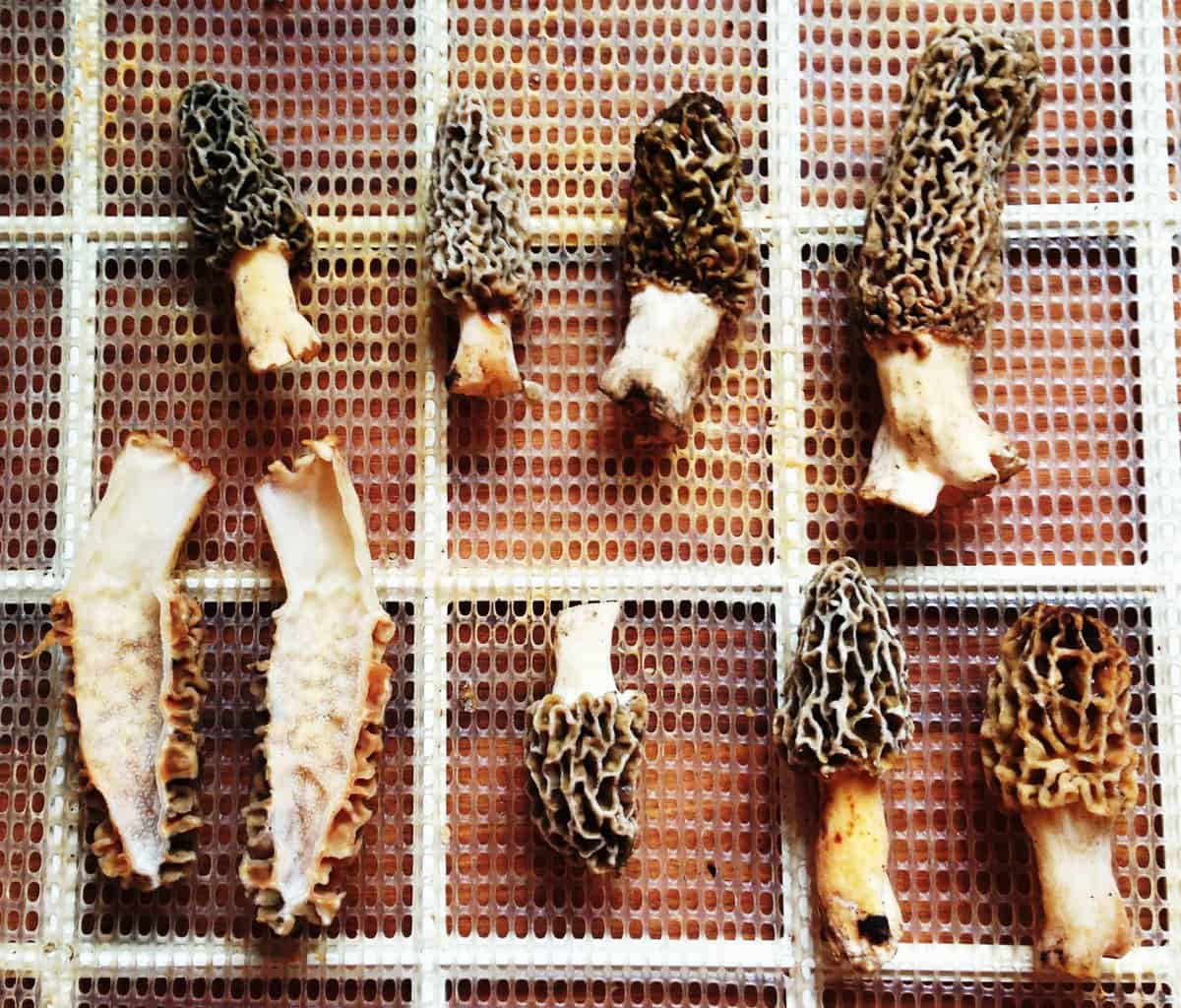
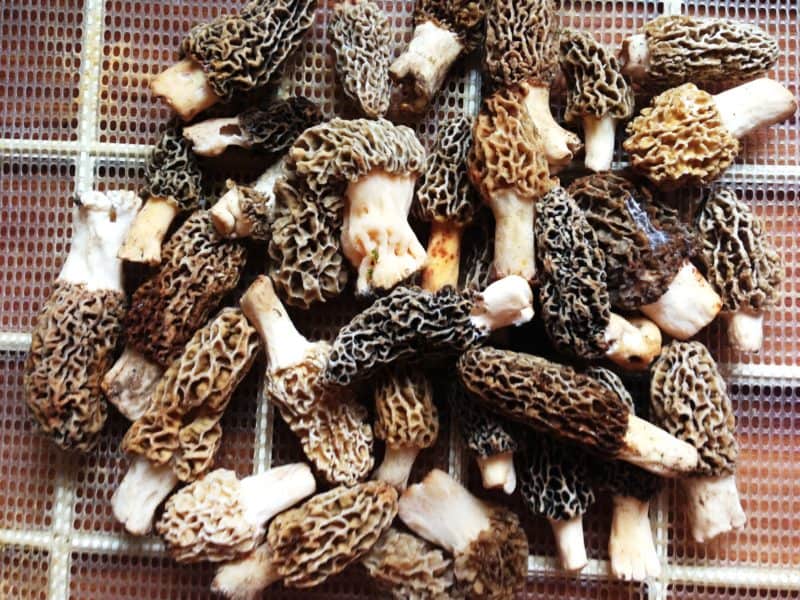
Dry mushrooms as soon as you can
This ensures that your mushrooms were dried in peak condition, and will rehydrate in peak condition.
What temperature do you set the dehydrator to?
A certain amount of heat can help develop good flavors in your dried mushrooms, allowing toasty aromas to develop. If your dehydrator has a high setting, 135 F-150F will work fine. If your dehydrator doesn't have a specific heat setting, you can always toast the mushrooms a bit before cooking with them in a pan or in the oven. Toasting dried mushrooms is optional, but it can be nice, especially with boletes.
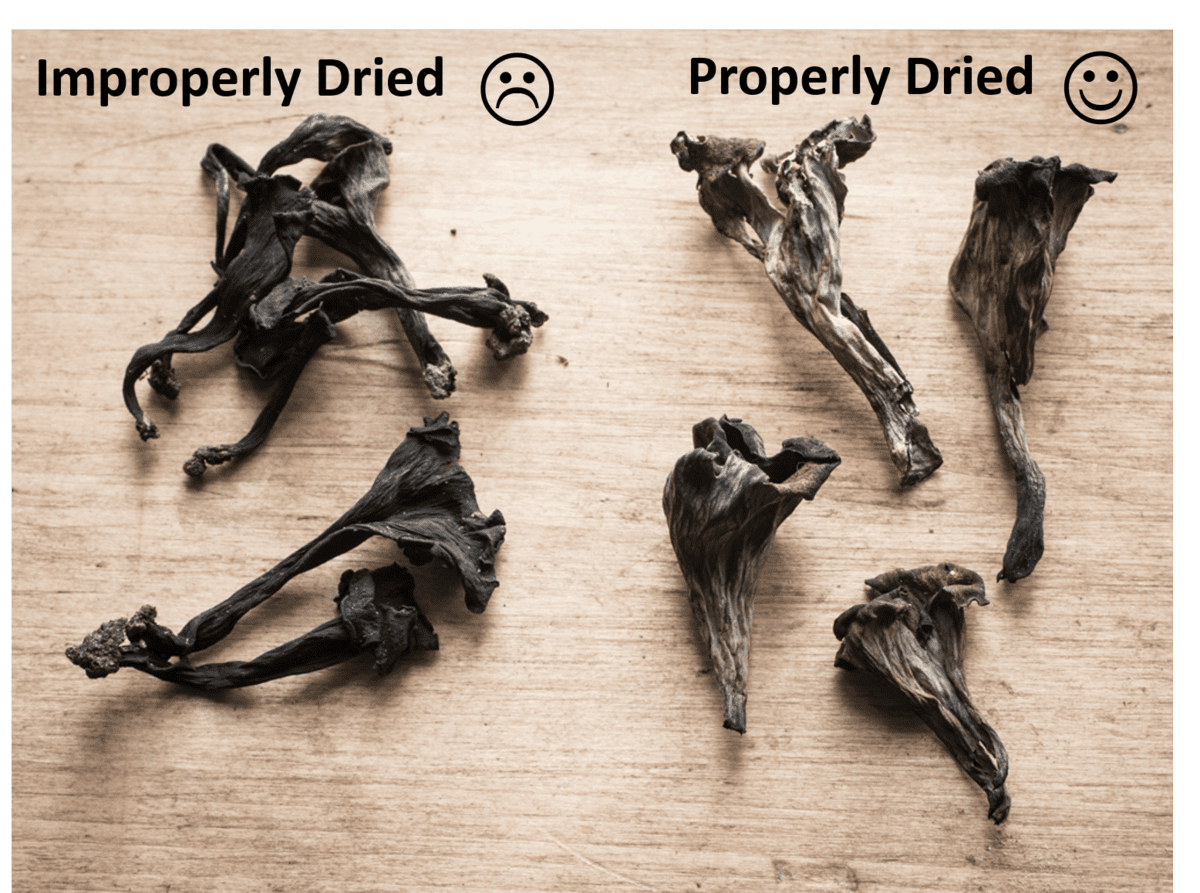
Don't dry wet mushrooms
If your mushrooms are wet from rain or warm from being in a vehicle, before even thinking about processing, cooking, or cleaning them, lay them out comfortably on a cookie sheet and refrigerate them immediately, covered in a slightly moist towel or rag. They need to aerate, cool quickly, and breathe to retain their shelf life. Once they're cooled, you will have the best success drying them.
Thinly slice your mushrooms
Thinly sliced mushrooms will dehydrate faster, mushrooms cut too thick can be tough after rehydrating. I do not dry whole mushrooms, unless they're hollow, like black trumpets, morels or yellowfeet. I don't recommend drying mushrooms whole, since they can be very tough.
Drying is a great way to use insect damaged mushrooms
After they're dehydrated, they can be ground into powders that will create stocks, rich compound butters, rubs and other things.
How long does it take?
This varies between species of mushrooms. Black trumpets will usually dehydrate themselves where I live in Minnesota, if I leave them on the counter. Basically, the thicker the mushroom, the more water it has, and the longer it will take to dry. Boletes take the longest by far, but I've never really had any sliced mushroom take longer than 48 hours to dry.
How dry should they be?
The answer is cracker-dry. Properly dried shrooms should almost be brittle, if there are any in your dried collection that still seems to have soft spots, either leave the top of the container you are going to store them open for a while so they continue to aerate, or dehydrate for another 24 hours.
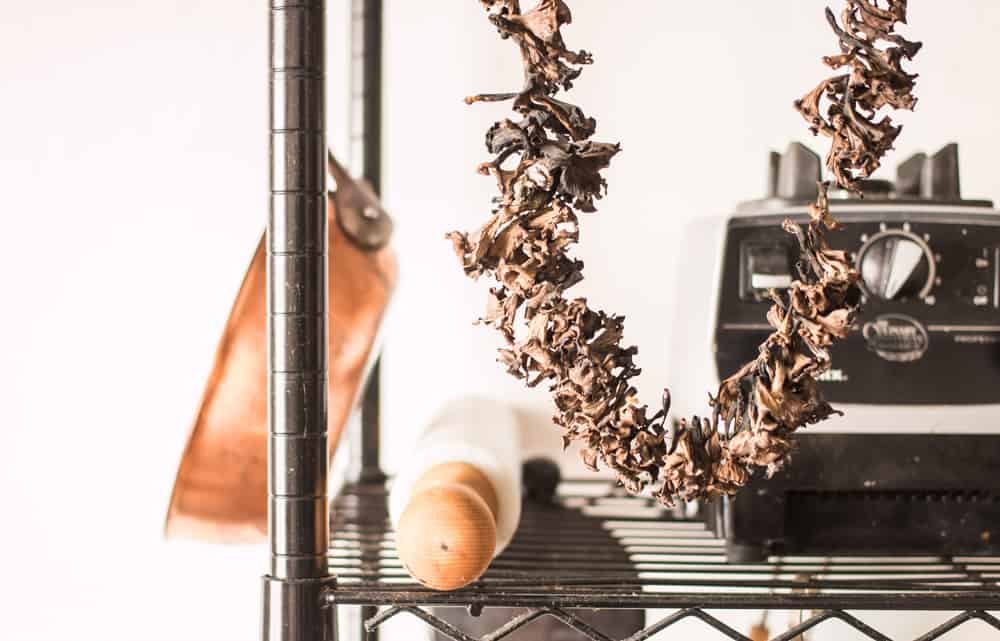
Drying wild mushrooms without a dehydrator
You don't have to have a dehydrator, but they're nice to have. People have been drying mushrooms for eons without a dehydrator, here's a few ways you might do it, and a couple troubleshooting tips.
- Slice the mushrooms as thin as possible
- Sliced mushrooms can be threaded with a needle and string, then you can hang them up and let them air dry outside, this is one of the oldest techniques.
- Blow a fan on the mushrooms constantly, it may take days for them to be completely dry.
- Laying sliced mushrooms on screens outside or in a dry place
- If the mushrooms feel even the slightest bit moist, leave them out for a while longer.
- Putting the mushrooms on a cooling rack in an oven on the warm setting, as long as it isn't hot enough to cook them works too, I like to keep the oven cracked open a bit though.
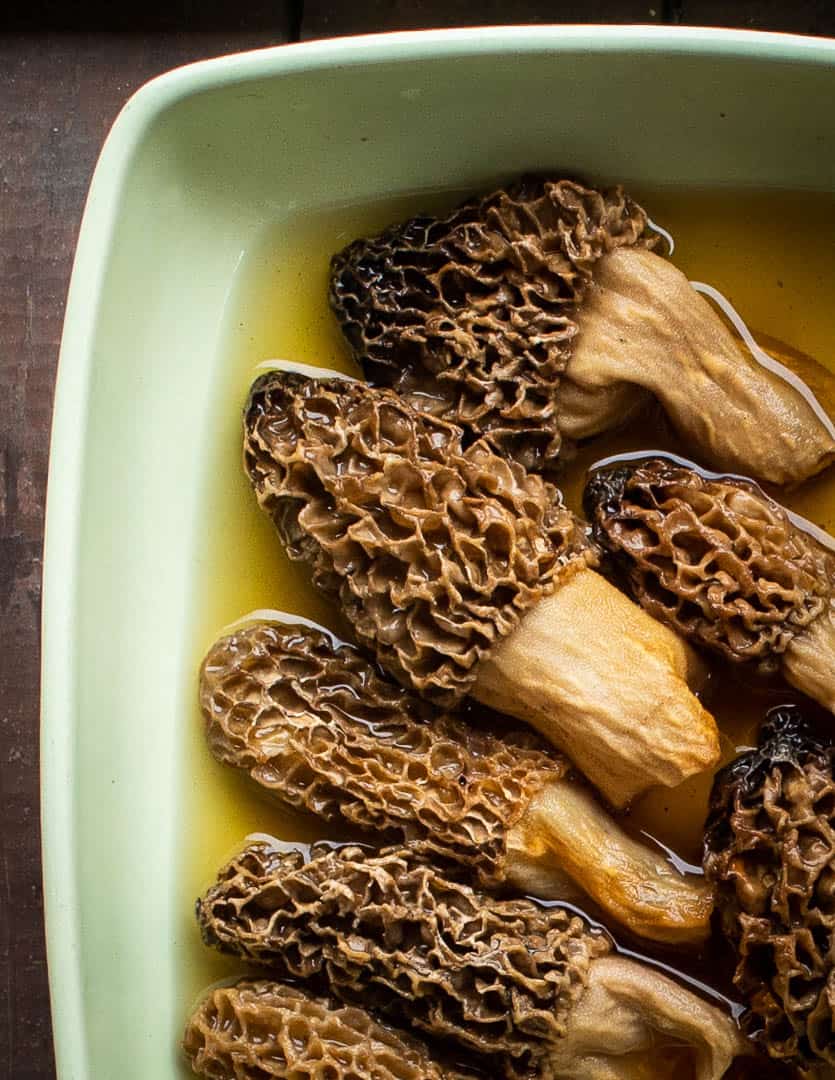
Re-Hydrating and Cooking
This wouldn't be complete without a mention of how to rehydrate mushrooms after they're dried. You may not think about it, and I definitely didn't at first, but the amount of time the mushrooms are rehydrated is very, very important when cooking with them. I like to rehydrate mushrooms just as long as they need, and no longer, typically 15-30 minutes is fine, especially when using a wet preparation.
Can you leave dried mushrooms in water for too long?
Yes. The flavor of mushrooms, as a general rule is very water soluble. When dried mushrooms contacts water, a little of the soul of the mushroom goes into it, and the amount of mushroom flavor contained in the water increases the longer the mushrooms are soaking. As well, over-rehydrated mushrooms, especially boletes, can have a kind of unpleasant, saturated texture, on the side of slugs.
Depending on what you're doing, it might not be an issue, for example, making a cream soup where the mushrooms will be pureed with their juice won't make a difference, but rehydrating mushrooms to sauté with some fresh ones and eat on some fresh arugula might suffer a bit.
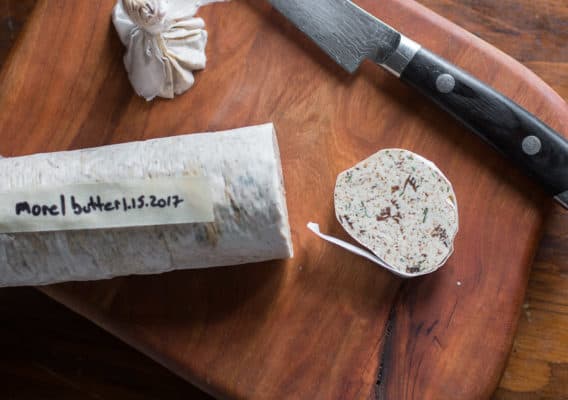
Cooking dried mushrooms without rehydrating
As long as your mushrooms were clean, grinding wild mushrooms into powder is a great use for them, especially for things like porcini that have been sampled by bugs. Here's a few examples:
- Morel crusted venison tenderloin
- Lobster mushroom seasoning
- Slippery jack-coffee rub
- Nettle ravioli with dried lactarius broth
Dried Mushroom Recipes
Now that you've brushed up on the basics, browse my selection recipes geared for using up your dried mushroom stash.
Dried Mushroom Recipes


Alla Katsnelson
For dehydrating black trumpets, it seems like you leave them whole...? I clean them pretty well in the field, but for dehydrating I've always opened them to get rid of slugs -- but often they then break in half the long way, or crumble further. Do you just not worry about a slug or two or 10? For every pound I'd say I find 5-10 slugs, most tiny.
Alan Bergo
Yes. Black trumpets are sold whole when they're dried commercially. Look inside the mushrooms or use a small flashlight. If you have lots of slugs in yours, pull them in half.
Jack
Just an FYI, I fell in luv with mushrooms on vacation when I bought a pizza with them and don't even remember why I did but they were shiitakes and have been enjoying all varieties since. Oyster are my fav but since I put some mushroom dirt
in my planting beds 2 yrs ago wine caps have been popping up although I didn't know that until now and I was just ripping them out and tossing them in the yard.
You never know but my goal still is to hunt down morels...
Kristen H
How long do you typically dehydrate morels? I had a lot of medium sized, sliced mine lengthwise, and dehydrated at 125 for 10 hours based on a couple sites.
I rehydrated them for 20-30 minutes but they just didn’t taste right. I tried frying some and threw some into gravy . I wonder if they over-hydrated.
Alan Bergo
You dehydrate them until they're bone dry. I leave them in for at least 24 hours myself. Any temp from 100 F-145 is fine, so 125 is right around the middle. If you need tips on working with dried morels, look at my gravy and steak sauce recipes.
Jo
To avoid any potential problems, I am dehydrating my leccinum, the red can Aspen scabberstalks. I did it in the over (all I have) on lowest temperature setting, which is 170, and door cracked open. The mushrooms slices, especially caps turned solid black. I read somewhere else that is just how lecccinums are, or is it because the over overcooked them? Eitherway, are they still good to eat and powder?
Alan Bergo
Darkening is natural
Mike Moranz
Alan,
I have a question to ask you but it looks like you have answered every question that could possibly be asked, so....
Don't be afraid of washing fresh mushrooms. It rains on them right? The key is a soft toothbrush with small amount of running water. I then drain them in a colander before placing on a paper grocery bag, open to the air in the fridge. Some mushrooms actually seem to improve after a couple days. I have left various types like this for a week and worst thing is they start to dry out, just like in the cool woods. Do not cover them. Airflow and low temp will slow down the deterioration so that you have time to find that perfect recipe, on your site.
Mckayla
I recently harvested reishi mushrooms. I don't have a dehydrator, so I attempted to air dry them. After leaving them out for about a week they became cracker dry but also developed some fuzzy white mold. My plan was to tincture them, and I'm wondering if I dust off the mold if it would be safe to still tincture them in alcohol. I hate to let them go to waste. Any insight is appreciated!
Alan Bergo
Nope, you'll want to chalk those up as a learning experience. Compounds in mold, once they take hold on something are difficult to get rid of, they also affect the flavor depending on the length of time they're exposed to the ingredient in question. For example, moldy chaga tastes terrible and is very noticeable. Granted flavor isn't a real issue in tinctures but I don't think you want to make a medicinal tincture from moldy mushrooms. I don't discuss medicinal aspects of anything really on this site, but I will tell you that. I had more mushrooms mold when I started than I can count so don't feel bad. You might use it as an excuse to go find some more. 🙂
Karl Dziura
Love your articles and the posts. Do you see any reason not to rehydrate Morels in milk?
Alan Bergo
That will work fine.
Jane H
I am drying Lion's Mane in a dehydrator but they are turning black. I take it I need to throw them away ?
Alan Bergo
Yep. Something went wrong there. They should be white-beige
Caio Braga
Hello, thanks a lot for all the great information you post here. As a first timer mushroom picker I've been eating your articles and recipes like a maniac!!
Unfortunately I dehydrated my first batch of black trumpets without reading your article and they turned out like the ones on the left from your photo. After picking them, I left overnight in the fridge, washed them and pat dried with paper towel (not super dry). Laid them on a tray, there were too many so they were overlapping significantly and dehydrated them in the oven at 122F with the door slightly open.
Why did they turn like that? no breathing space? not dry enough before going to dehydrator?
They smell fantastic, Can I still eat them?
Alan Bergo
Caio, so, if you're going to pick enough black trumpets to have a need to dry them, you're likely picking other mushrooms as well, and, you need to invest in a dehydrator. I like to keep 3-all large size models. Go to an outdoor store with a hunting section and buy a big one made with stainless steel sides. If you want an online option I'll grab one for you. Drying mushrooms in the oven is much harder to control as home ovens are notorious for being incorrectly calibrated. Mostly, it will just cook the mushrooms, and they will dry out, losing about twice as much or more volume as they would typically. Your very dark black, dried black trumpets are just fine to eat, but they're not ideal, or best practice when drying mushrooms. One mycologist I know actually prefers older, slightly limp trumpets, but 99.9% of chefs, health department personnel, and experienced mushroom hunters I know would frown on serving them. That being said, they won't hurt you, especially as you're probably going to cook them again before you eat them. Hope that's helpful.
Caio Braga
Thanks!!
Aleks
I picked and air dried a big batch of sliced king boletes, and they looks beautiful and are cracker dry. Problem is, they are nowhere near as fragrant as dry porcini from the store. Is this normal? Expected?
Alan Bergo
It is normal. Our North American porcini are not as fragrant.
Tina
I found some great chicken of the woods, however, I found them a few days late. I plant to make a tincture out of them. Do you have advise on how to make sure I get the bugs out (if there are any) before I use them?
Alan Bergo
I typically don't allow comments pertaining to the medicinal use of mushrooms here, and no, I don't. The bugs won't harm you though, and if you're making a tincture, alcohol would kill them anyway, if that's helpful.
Richard Goodrick
Do cauliflower mushrooms dehydrate well? I would also appreciate it if you could give me some tips on temperature and time in the dehydrator.
Alan Bergo
Cauliflower mushrooms are sold regularly in Asian markets so I assume they'll rehydrate well, I haven't tried them specifically yet.
Cyn
Hi, Alan. I’ve seen mushrooms that LOOK like cauliflower in several local Asian groceries, but they all say “Tremella” on the package. Do the cauliflowers you see in a grocery store say “sparassis” or “cauliflower” on the bags? Thanks in advance!
Alan Bergo
No they're a type of Tremella. I haven't cooked with them.
paul finden
i found a fair amount of naturally dried hens,about 10#s,what's the best way to rehydrate them? the base is still moist. Will the frods hydrate from the bottom if soaked?
Alan Bergo
I wouldn't pick old mushrooms like that, skip them and find some good ones.
Arjuna da Silva
I kept some chicken of the woods and oysters in a paper bag in the fridge and they got dark and dried out. Can I use them? They're not slimy or smelly... Thanks!
Alan Bergo
They're probably dried, continue drying them out, then put them in soup or something.